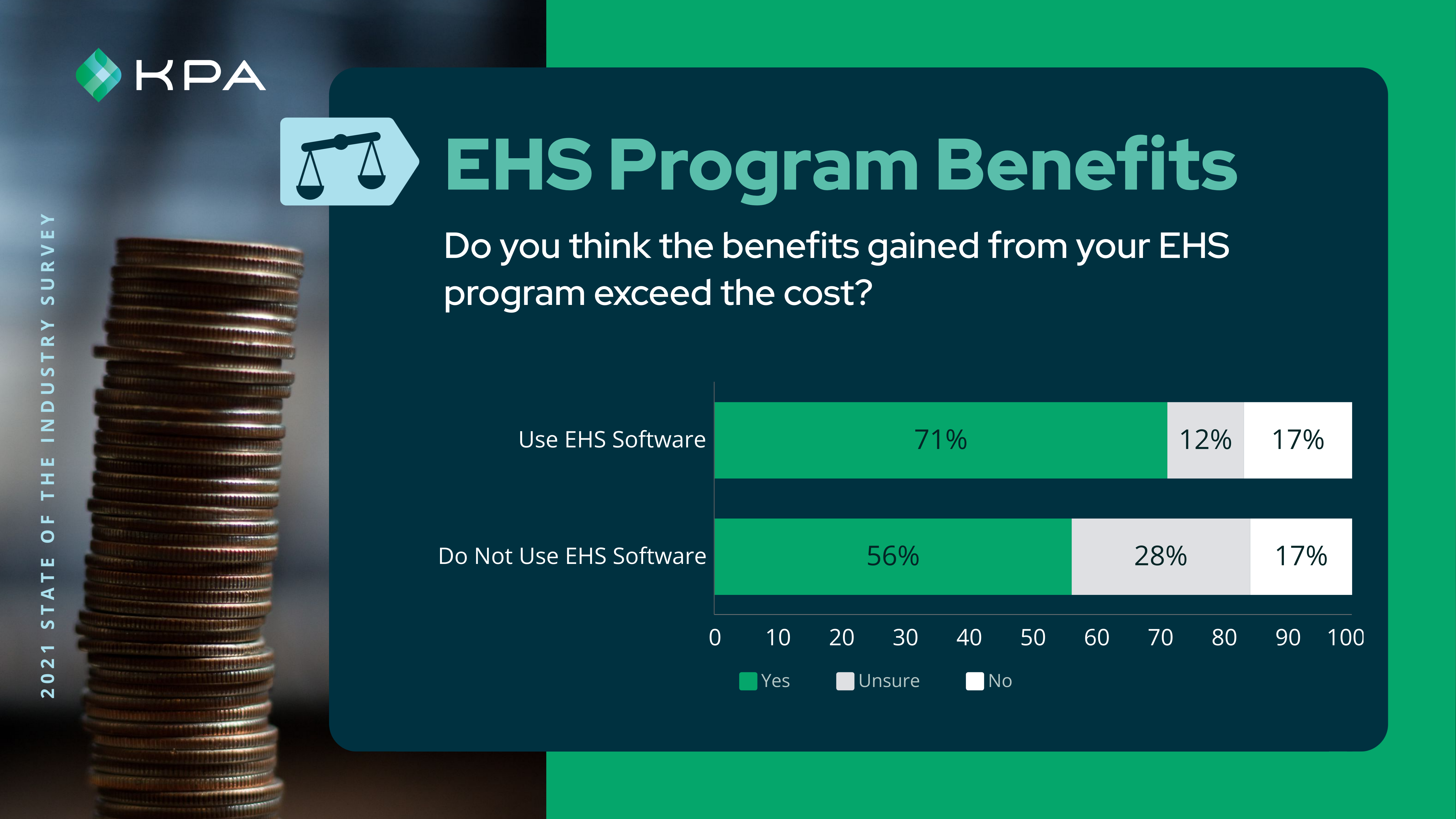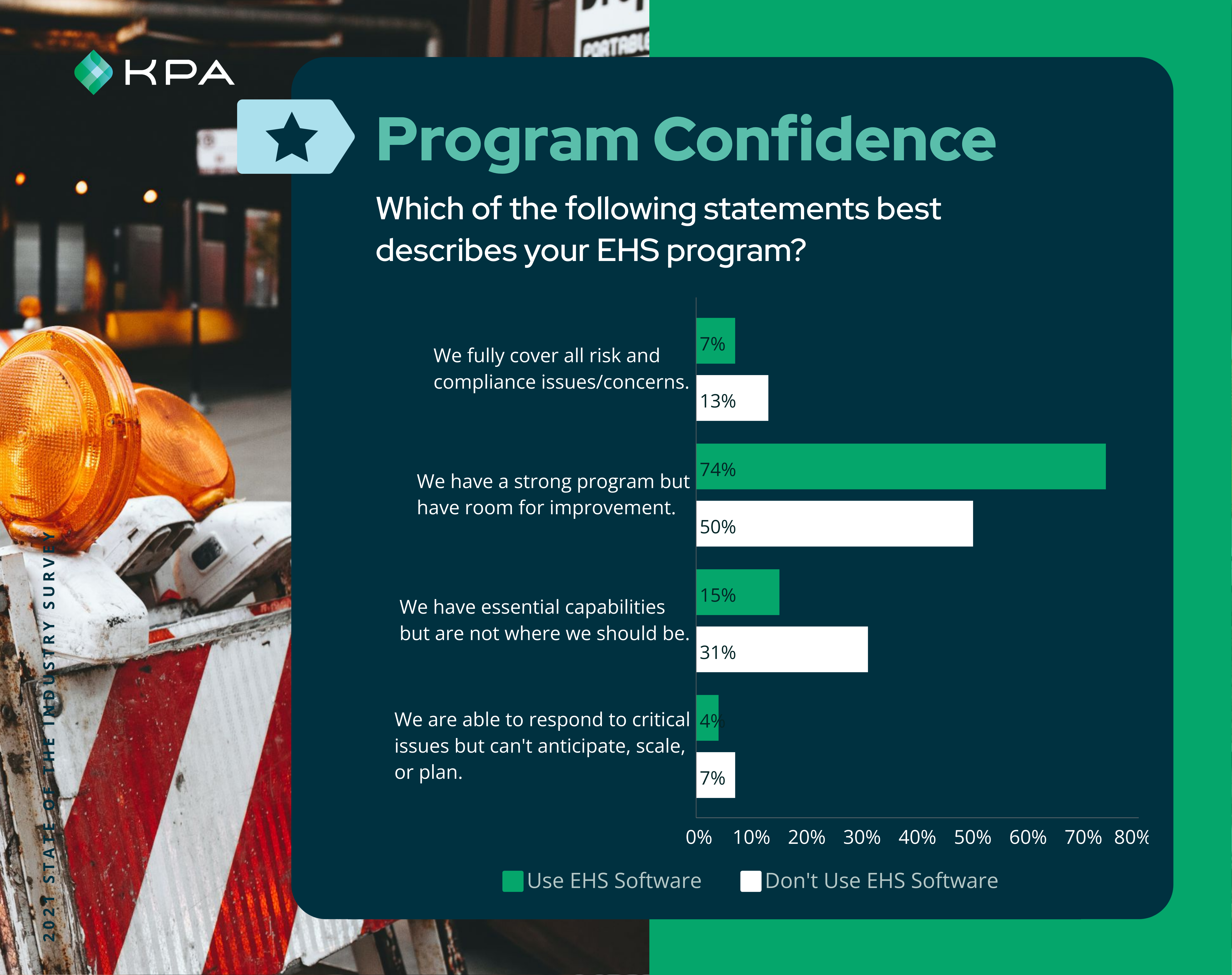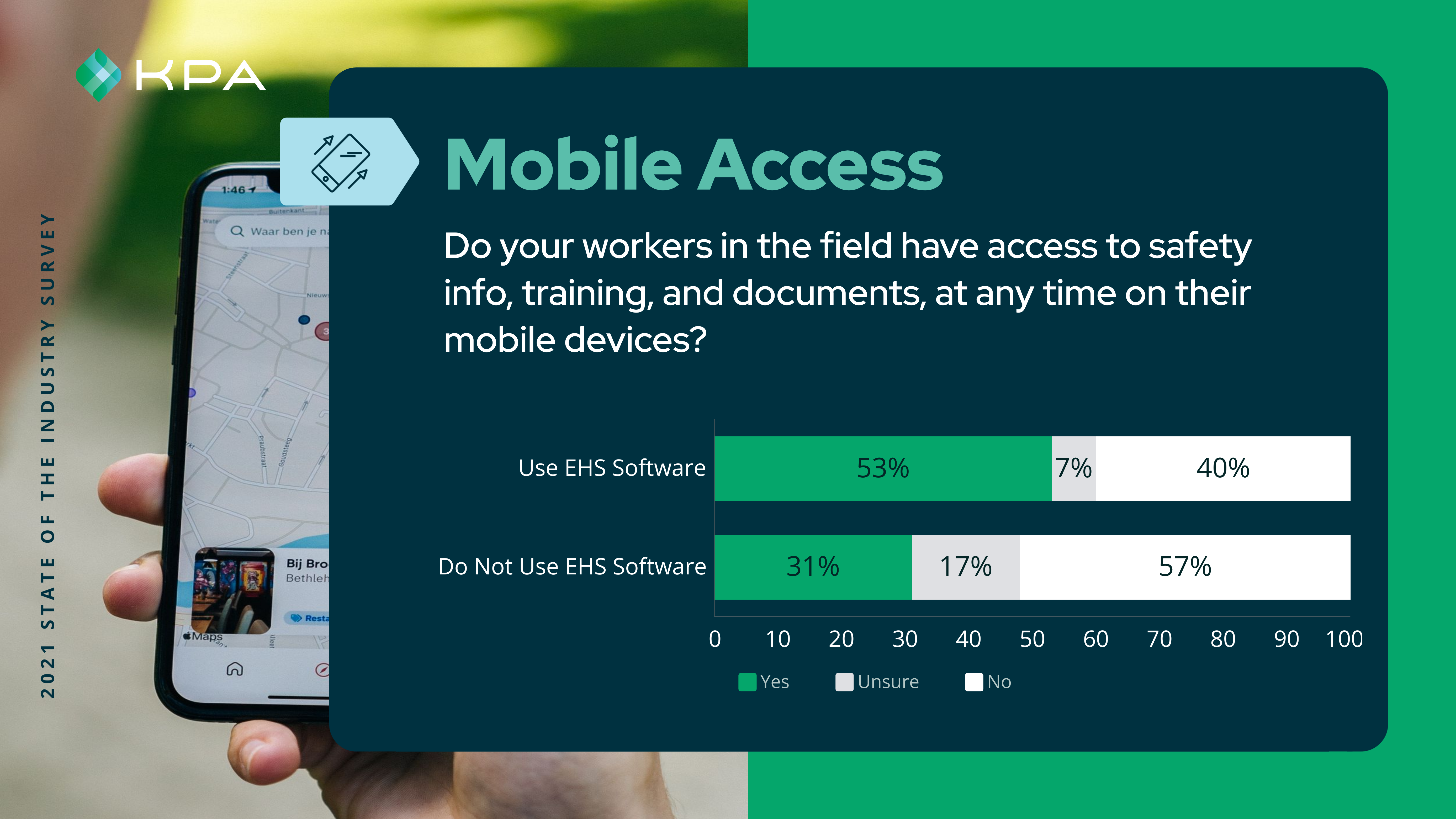We asked people who manage safety programs if they thought the benefits of their program outweighed the costs during our recent EHS State of the Market Survey. Slicing and dicing the survey data led to some fascinating results.
Forty-five percent of non-software users who responded said they weren’t sure or didn’t think the benefits of using EHS software outweighed the investment in such technology. But, we’ve got some important news to share with them!
A majority of software users who participated in the 2021 EHS Today survey said the benefits of using their EHS software outweighed the cost of their investments.

There are many ways they are likely experiencing such gains.
These include:
- Loss reduction
- Time savings
- Better methods of communicating
- Increased opportunities to improve their safety culture through program integrations
The survey results also shed light on the link between EHS software and the respondents’ underlying confidence in their EHS programs overall. The data gleaned from the survey revealed that those who have invested in EHS software experienced far greater confidence in their programs (81%).

That level of confidence dropped by about 20% among those not using EHS software. But, why?
Well, it could be related to a fear of the unknown.
For instance, one will never know which accidents were prevented because they didn’t occur. But, when technology is used, EHS managers can—for instance—implement a tool within their EHS process that allows for more frequent and proactive reporting. This gives those managers more predictive insights, so they can focus accident-prevention efforts in the right direction.
EHS software is a lens through which EHS managers can also start to see some clearer trends.
And, when they’re able to recognize hazards before they become actual incidents, their confidence in their EHS program can truly grow since EHS software can provide a daily—even hourly—snapshot on overall program health, which is essential for identifying trouble spots and taking appropriate action to mitigate risks. The bottom line: When looking to build confidence, there is no substitute for having a real-time view of performance.
Better worker engagement is likely, too.
Worker participation is a key component to implementing an effective safety and health program. To succeed at building and maintaining a successful safety culture, everyone needs to do their part and “own” safety. EHS Today’s survey results showed that companies using EHS software are at an advantage when it comes to worker participation, which can also help drive ROI.

The survey data showed that a majority of companies using EHS software (53%) were able to provide their workers with anytime access from their mobile devices for documenting incidents, committing safety reports, and accessing training, important safety updates, and documents while in the field. The data on the mobile accessibility of EHS software also showed a correlation to overall program confidence.
One likely reason for this link comes from the EHS software users’ ability to get an immediate pulse on worker performance in the field. They also can get insights directly from their teams on inspections and training being completed, hazards being reported, and overall comprehension scores concerning safety and training information made available in real-time via workers’ mobile devices.
Confidence level is another key indicator of ROI
Whether EHS software is at play or not, when measuring the return on investment of EHS program resources, it’s important to ask where the confidence level is at.
For instance, ask whether the methods being used:
- Fully cover all risk and compliance issues and concerns
- Help the organization quickly identify problematic issues and which, if any, areas have room for improvement
- Provide essential capabilities for staying on top of compliance issues and concerns
- Allow you to not only respond to critical issues but also let you anticipate, scale, or plan
By taking an in-depth look at how a program stacks up in these areas, you can rate the current confidence level and think about the ways in which the program can be improved upon. This can help you determine if the resources being used are providing a good ROI or not.
Here at KPA, we’ve helped many companies attain a high level of confidence in their EHS programs, and we are here to help you do it, too! Please feel free to contact us to learn more.

